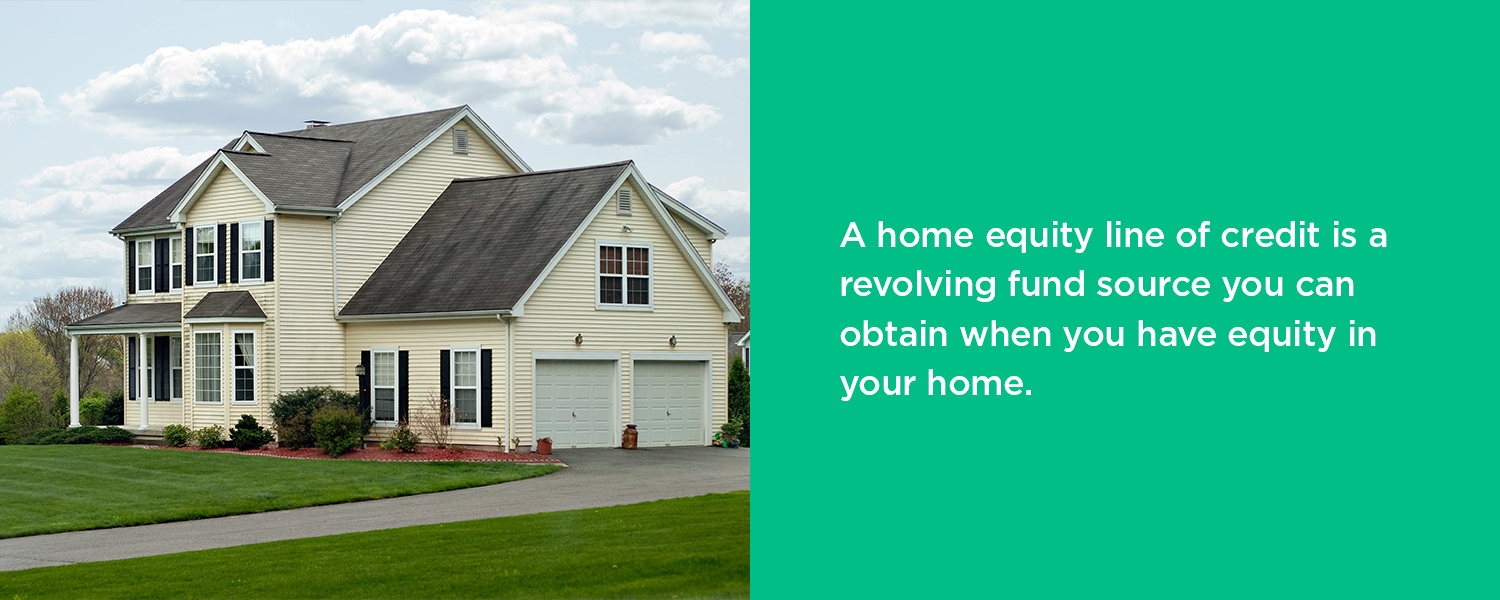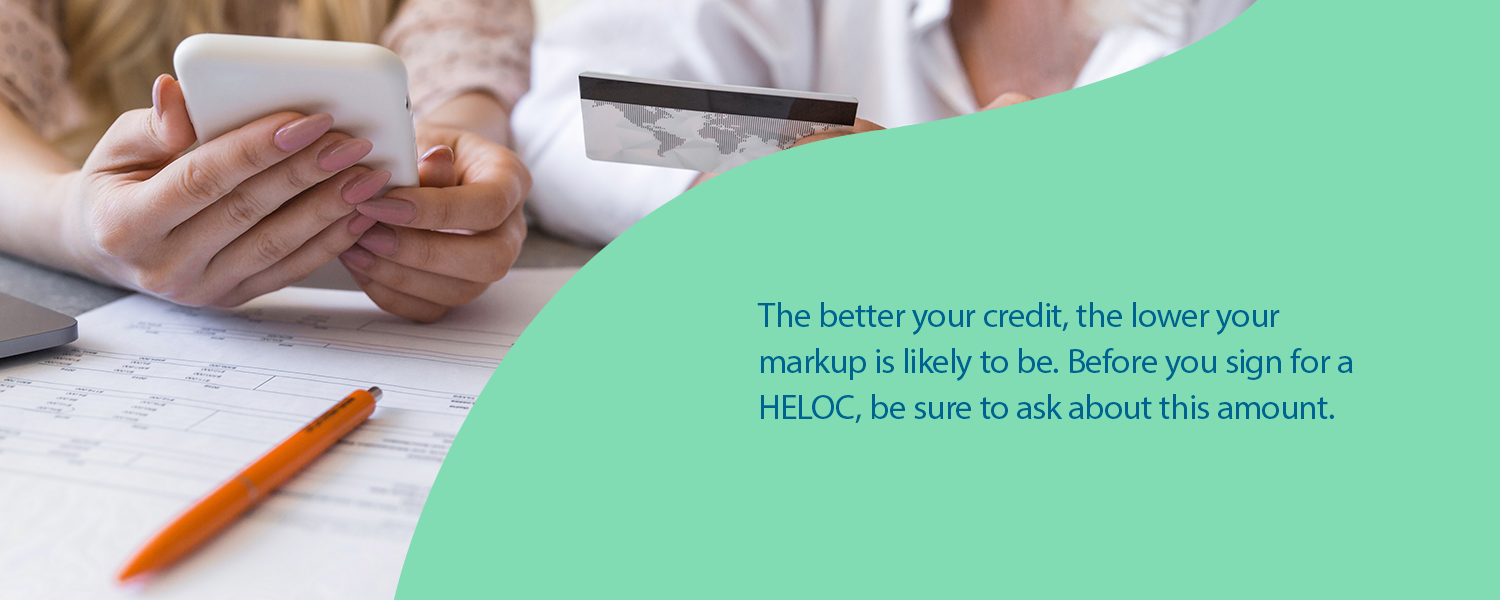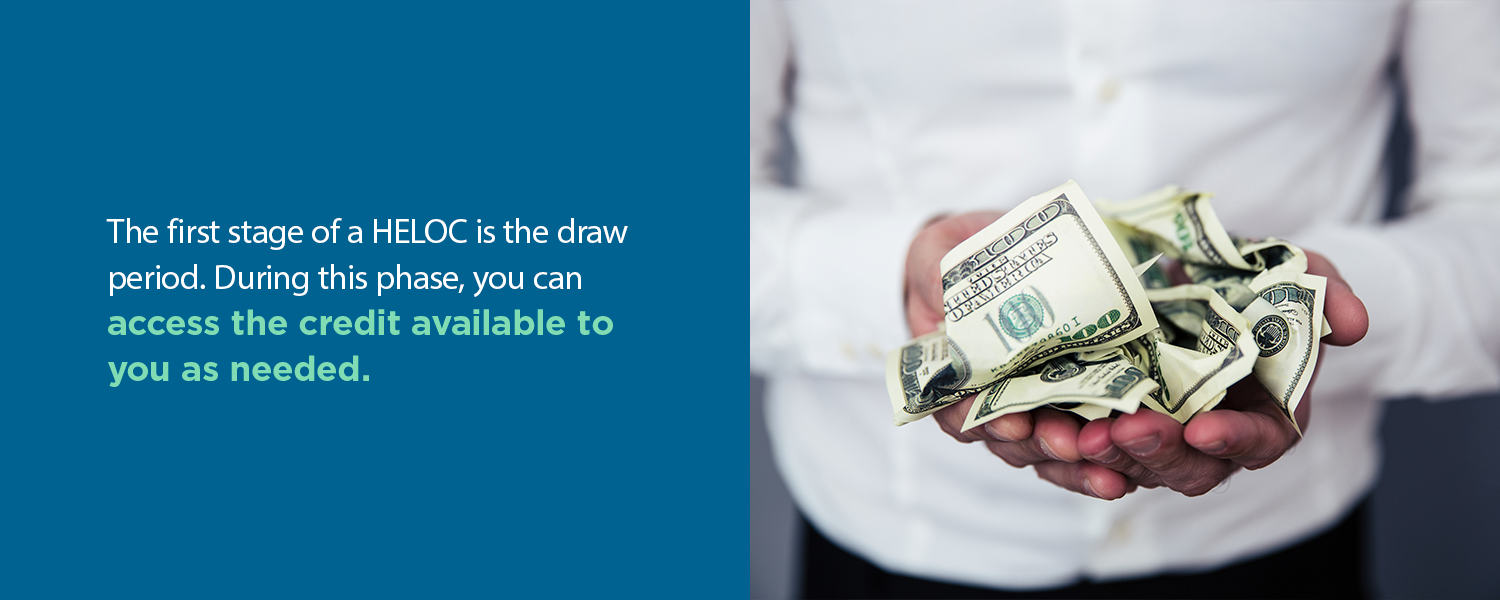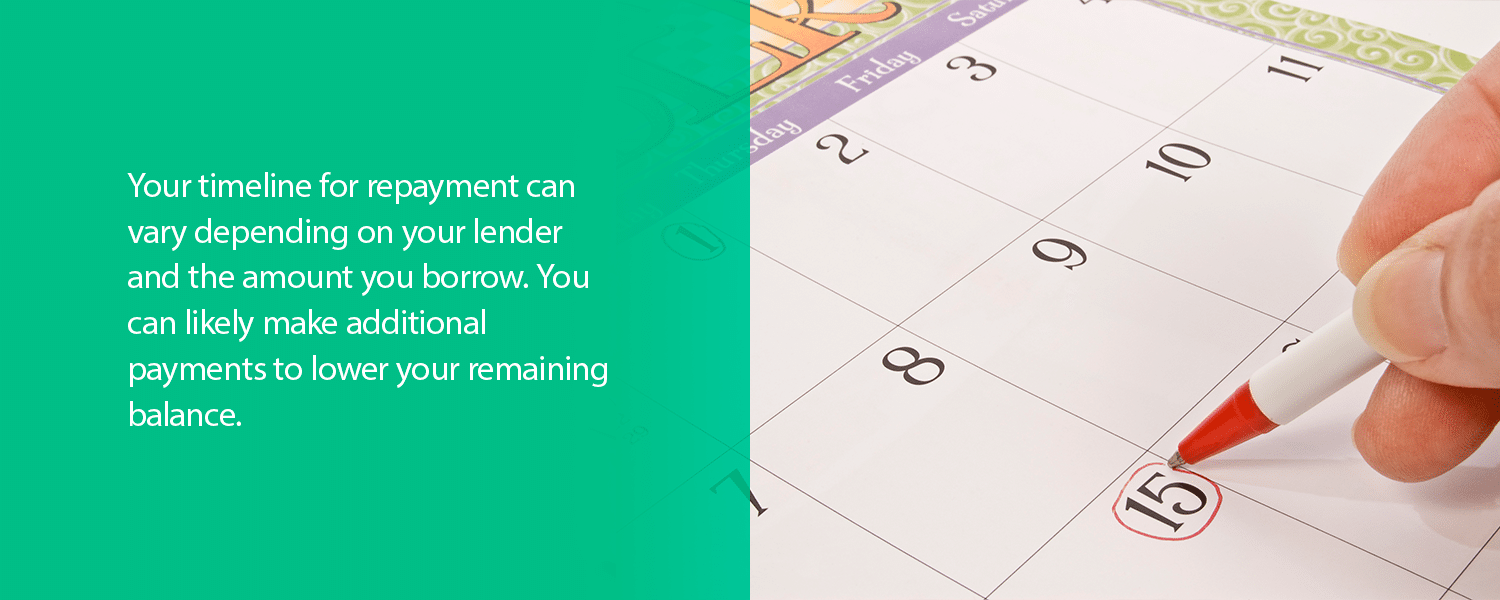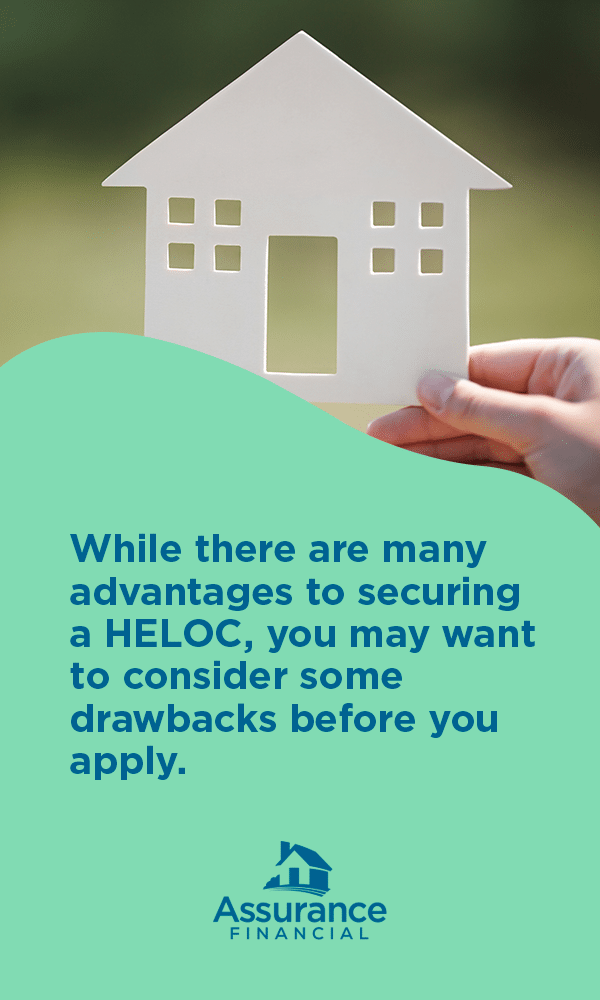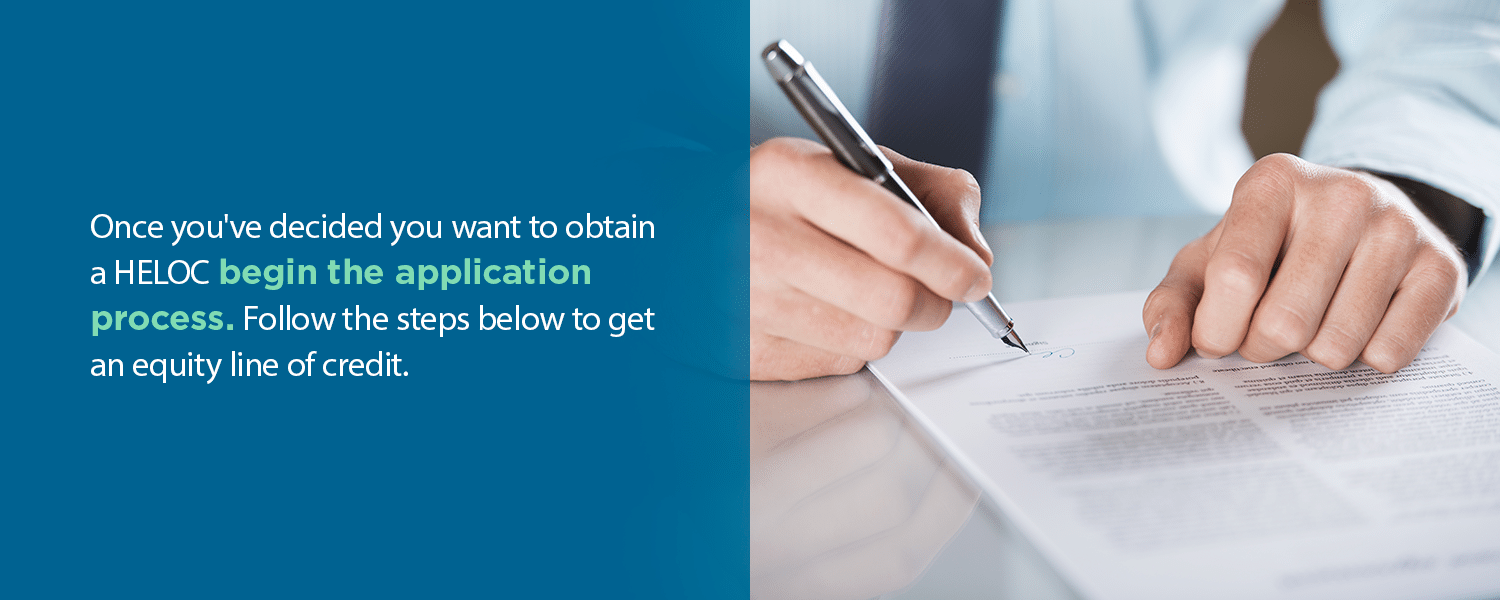What Is a Home Equity Line of Credit?
Homeownership comes with a wide range of benefits. One significant advantage is that you can build equity as you pay off your mortgage over time. You can leverage home equity to access cash for major purchases, alternative debt repayment, retirement plans or home renovations. You can also use it to obtain funds via a second mortgage like a home equity line of credit, or HELOC.
When you obtain a HELOC, you are securing it against your home equity value. As such, lenders may offer lower rates compared to other personal loans. At Assurance Financial, we offer HELOCs to homeowners who qualify.
What Does HELOC Mortgage Mean?
A home equity line of credit is a revolving fund source you can obtain when you have equity in your home. Your home equity is the difference between your home’s value and your current mortgage balance. For example, if your home is worth $200,000 and your current mortgage balance is $150,000, your home equity would be $50,000.
There are a few ways to build equity in your home, including refinancing, renovating, paying down your mortgage and making a sizeable down payment. Your home’s value may also increase with an upward trend in the housing market.
If you own your home and have already paid off your mortgage, you may also be able to obtain a HELOC. In this case, the HELOC will be your primary mortgage rather than a second mortgage. Like a credit card, you can access this source of funds as needed. You may have several different ways to do so, such as by writing a check, making an online transfer or using a credit card associated with your account.
A HELOC mortgage may have few or no closing costs and usually comes with a variable interest rate, though you may be able to get a fixed rate for a few years. A HELOC is not the same as a home equity loan, which is cash that comes to you in a lump sum. Homeowners are more likely to opt for a home equity loan for a one-time purchase or expense like a major renovation.
What Can You Use a HELOC For?
HELOCs are versatile because you can use yours however you want without restrictions. The following are some of the expenses you can use a HELOC for.
- Educational costs: If you want to return to college to get a degree, you can use a HELOC to cover your college expenses.
- Emergency funds: You can also use a HELOC to cover emergency expenses, such as damage to your home not covered by insurance, a medical emergency or the loss of a vehicle.
- Debt consolidation: Credit card debt can quickly become overwhelming, costing thousands every year in interest alone. You can use a HELOC to consolidate and pay off your debt.
- Home improvements: You can leverage your home equity to make improvements, such as renovating your kitchen or installing new windows. Remodeling projects are among the most popular uses of a HELOC.
How Does a Home Equity Line of Credit Work on Your House?
With a HELOC, your home equity is collateral. As such, a lender may be able to offer competitive interest rates comparable to rates for first mortgages. A HELOC will likely have an adjustable interest rate that rises and falls with market conditions. Your lender begins with an index rate to set your interest rate, and depending on your credit, will then add a markup. The better your credit, the lower your markup is likely to be. Before you sign for a HELOC, be sure to ask about this amount.
If you are still paying off your first mortgage, your HELOC will be a second mortgage, which is any type of loan borrowed against your home’s equity. You can borrow funds against your credit line whenever you want, and if you do not use funds, you will not owe interest.
You can repay all or a portion of what you draw from your line of credit each month. When you pay off the balance, you will have access to your full credit line again. For example, if you have a $40,000 line of credit and you spend $5,000, you will need to repay that $5,000 before you can access the full amount of $40,000.
If your lender does not require minimum withdrawals, a HELOC can be a source of emergency funds. For example, if you lose your job, you can take out a HELOC for extra cash as long as you have equity in your property. Your lender will specify how many years you can withdraw from your credit line while only paying back interest and how many years you have to repay the principal and interest.
There are two phases of a home equity credit line, which we’ll explain below.
Draw Period
The first stage of a HELOC is the draw period. During this phase, you can access the credit available to you as needed. You typically only need to make interest payments in the draw period. However, if you choose, you can pay extra and apply it toward the principal. In some cases, you can ask for an extension after the draw period is over. If you do not want an extension, your HELOC will move into the next stage.
Repayment
The second phase of a HELOC is the repayment period. During this stage, you cannot access additional funds. You will also be making payments of principal and interest rather than interest-only. You will continue paying until you have repaid your balance. Repayment options during this phase vary from lender to lender. Remember, payments in this stage could be much higher than they were during the draw period, so be sure to create a repayment plan and include this expense in your budget.
Do You Have to Pay Back a HELOC?
Yes, as with other forms of debt, you have to pay back a HELOC. When you repay a portion of your principal, these funds will return to your home equity line of credit. You must pay off the rest of your principal and interest during the repayment period.
Can You Repay Your Debt Early?
If you’re already making regular payments, you may want to repay your debt more quickly to pay less total interest. During the draw period, you can opt to make principal payments, even if the agreement’s terms only require you to make interest payments.
Review your budget to determine how much you can put toward repaying your HELOC each month. If you are concerned about how much interest you’ll be paying, you may want to look for opportunities to make additional payments toward the principal and lower your overall monthly payments.
Is There a Prepayment Penalty?
Some lenders charge penalties for paying off a HELOC early. Whether you want to get ahead or you’re planning to sell or refinance your home, prepayment penalties can throw your plans for a loop if you’re not expecting the charge. Before you pay back your HELOC early, be sure to ask your lender about these penalties. Typically, small amounts beyond your required monthly payment will not incur a prepayment penalty, but you should carefully review your agreement and terms before moving forward.
What Are the Advantages of a HELOC?
If you qualify for a HELOC, there are a few reasons you may want to apply for this line of credit. The following are some of the advantages of a HELOC.
- Skip the fees: While credit cards tend to charge cash advance fees, you likely won’t have these when you draw funds from your HELOC. If a lender charges a fee every time you draw money, you may want to look for another lender.
- Improve your credit: Two factors that affect your credit score are your credit mix and payment history. You can increase your credit score by securing different types of credit — such as loans and credit cards — and making consistent, on-time payments. Obtaining a HELOC may boost your score if you steadily pay off the loan.
- Get a low interest rate: Even when mortgage interest rates are higher, a HELOC typically has a lower rate. HELOCs often come with adjustable interest rates, and though these can fluctuate, there are limits on how much the rate can rise while you have your loan.
- Pay lower initial costs: Similarly, HELOCs tend to come with lower initial costs than credit cards. That makes a HELOC ideal for ongoing projects or debt consolidation.
- Get a higher credit limit: You can likely get a much more generous credit line from a HELOC than from a credit card. Remember, the amount you can receive depends on the equity in your home and your credit score.
- Convert to a fixed rate: You may be able to convert your adjustable interest rate to a fixed rate, which can make your payment and interest rate more consistent and predictable. Though this may happen automatically when your HELOC enters the repayment phase, you may be able to convert it to a fixed rate earlier.
- Pay low or no closing costs: While you likely have to pay closing costs for your first mortgage, when you get a HELOC, you may not have to pay any at all if you have good credit. Any required closing or appraisal costs are likely to be low.
- Borrow the funds you need: With a HELOC, you’ll use the funds you need when you need them. You can borrow cash as you go, and if you eventually need less than you anticipated, you will pay a lower monthly payment. This flexibility is one significant advantage for borrowers who apply for a HELOC.
- Use the funds as you see fit: A HELOC imposes few restrictions on how borrowers can use the loan. Though many homeowners renovate or update their properties, you don’t have to. You can put the money toward various expenses, such as travel, higher education or debt consolidation.
- Deduct interest on your taxes: According to the IRS, you can deduct interest payments if you use your HELOC to substantially improve, build or buy the home that secures your loan. There is a limit on how much you can deduct, combined with the interest on your first mortgage.
- Enjoy flexible options for repayment: Many HELOCs come with flexible repayment options, including the timeline and interest-only payments versus payments that include principal and interest. Your timeline for repayment can vary depending on your lender and the amount you borrow. You can likely make additional payments to lower your remaining balance.
What Are the Disadvantages of Home Equity Lines of Credit?
While there are many advantages to securing a HELOC, you may want to consider some drawbacks before you apply.
- Fees: While lenders make money from the interest you pay, you may also owe some fees, such as an annual fee, transaction fee, appraisal fee or a fee if you refinance or cancel your HELOC before the end of the draw period. Some lenders may also charge fees if you do not borrow a specific amount or maintain a given loan balance. Be sure to review these fees before moving forward with a HELOC.
- Upfront costs: Some lenders charge upfront costs to get a HELOC, such as an application fee, home appraisal, title search and real estate attorney fees. Consider these to determine whether a HELOC is the right option for you.
- Loss of equity: With a HELOC, you borrow against your home equity. If your home’s value drops with a dip in the housing market, you could owe more than your property is worth. When you have an outstanding HELOC, you may also be ineligible for other opportunities to borrow against your home’s equity.
- Payment increase: While the low payment during the draw period can be tempting, your minimum monthly payment will increase in your repayment period to include principal and interest. To avoid an unwelcome surprise, plan for your monthly payment to go from a small sum to hundreds of dollars.
- Limited draw period: Every HELOC has a draw period, which is the only time you can draw funds. After this phase, you will need to repay your HELOC.
- Variable interest rate: A HELOC often comes with a variable rate, so it can rise or fall depending on the market. Even if the HELOC has a low interest rate when you obtain it, that could go up when your HELOC enters the repayment period.
- Risk of overspending: Though overspending is not an inherent disadvantage of HELOCs themselves, you should be aware of the risk. Since you only need to make interest-only payments in the draw period, you can easily access more cash than needed, which could lead to financial ramifications.
- Minimum withdrawals: Some HELOCs may come with minimum withdrawal requirements, which means you’ll need to borrow a specific amount and keep your credit line open for a given period.
- Use of your home as collateral: Since you are using your home as collateral, you risk losing the house if you can’t repay your HELOC. That’s why it’s wise to only use a HELOC to increase your emergency funds or cover expenses that can help you accumulate wealth, such as home renovations and improvements.
If your income is not stable and you can’t make your monthly payments, a HELOC may not be the right option for you. Additionally, if you aren’t looking to borrow a large amount of money, you may want to opt for a low-interest credit card instead.
How Do I Get an Equity Line of Credit?
Once you’ve decided you want to obtain a HELOC, begin the application process. Follow the steps below to get an equity line of credit.
- Ensure you have sufficient home equity: Use a HELOC calculator or discuss your situation with our team at Assurance Financial to determine whether you have enough equity in your home to qualify for a HELOC.
- Review your credit score: You may be more likely to get approved for a HELOC and qualify for a better interest rate if you have a higher credit score. If you want to improve your credit score before you apply, you can plan to pay off some of your debts and make on-time payments. You can also review your credit report to ensure there are no errors you need to dispute.
- Speak to several lenders: Shop around at several lenders to make sure you can get the best terms and rate. Research lenders and ask about pre-qualification offers that may be available to you. At Assurance Financial, we offer historically low rates.
- Collect your application materials: Once you find your lender, you will need to provide your application materials — such as your identification, employment and salary information — plus your estimated home value and your outstanding mortgage balance.
- Provide verification documents: After you accept a HELOC offer, you will need documentation to verify the information you have provided. This paperwork may include tax returns, W-2s or pay stubs. The lender may also require an appraisal for your home and will complete a hard credit check, which will temporarily affect your credit score.
- Wait through the underwriting process: As with your first mortgage, you will have to wait for the underwriting process. For a HELOC, the underwriting is less extensive.
- Receive your funds: Finally, you will sign your paperwork and receive your money, which you can then start drawing from. The amount of time between approval and funds disbursement will depend on your lender.
Apply for a HELOC Loan With Assurance Financial Today
When you apply for a HELOC loan with Assurance Financial, we only need your asset information, proof of income, two most recent tax returns, proof of identification and credit score. We can review your application faster when you use our secure bank connector, and you can take a simple snapshot of a pay stub as proof of income. On the other hand, if your employer uses ADP, all you’ll need is your payroll login.
Contact us at Assurance Financial if you want to learn more about getting a HELOC or apply for a HELOC loan with Abby, our virtual assistant that can help guide you through the loan process.
